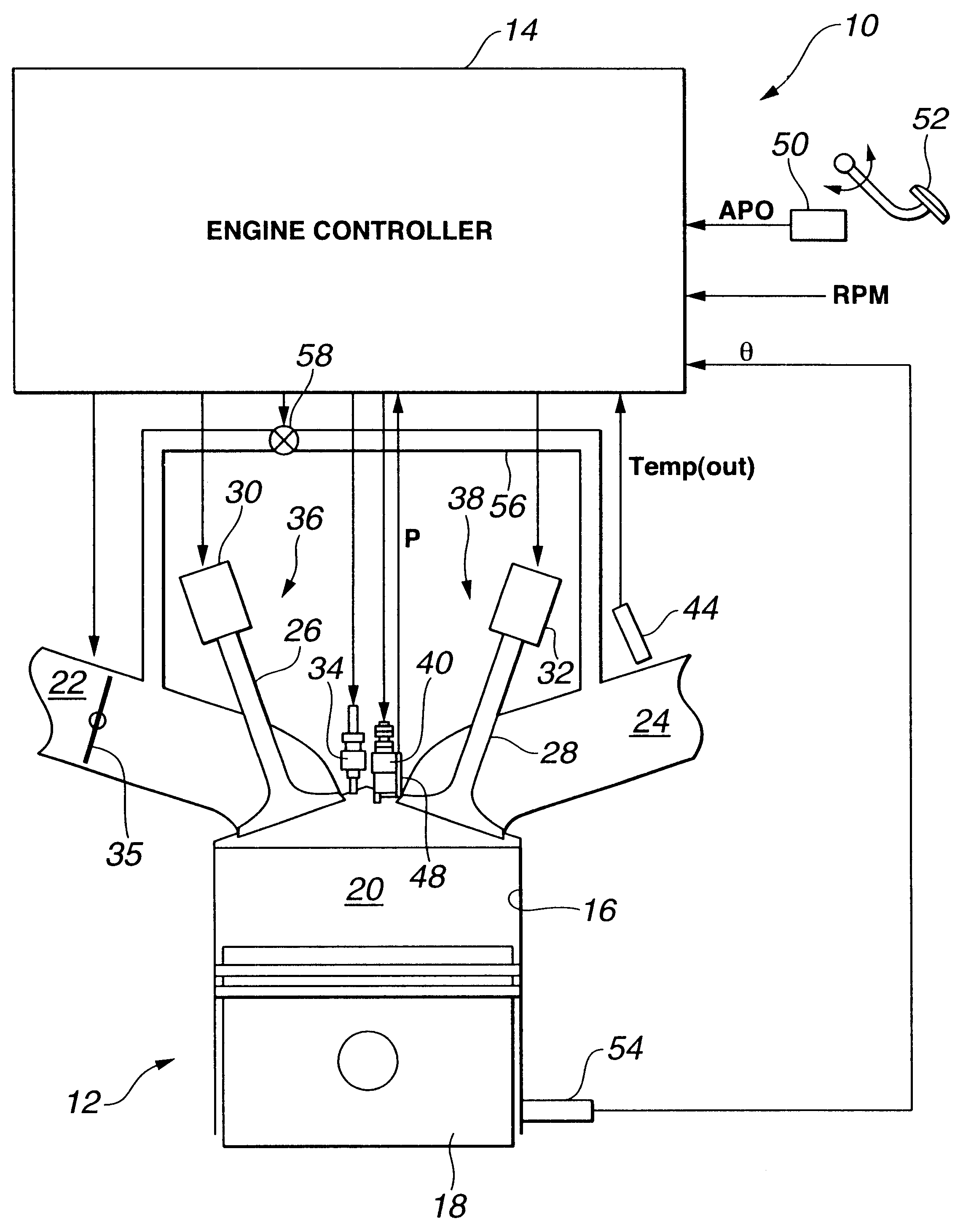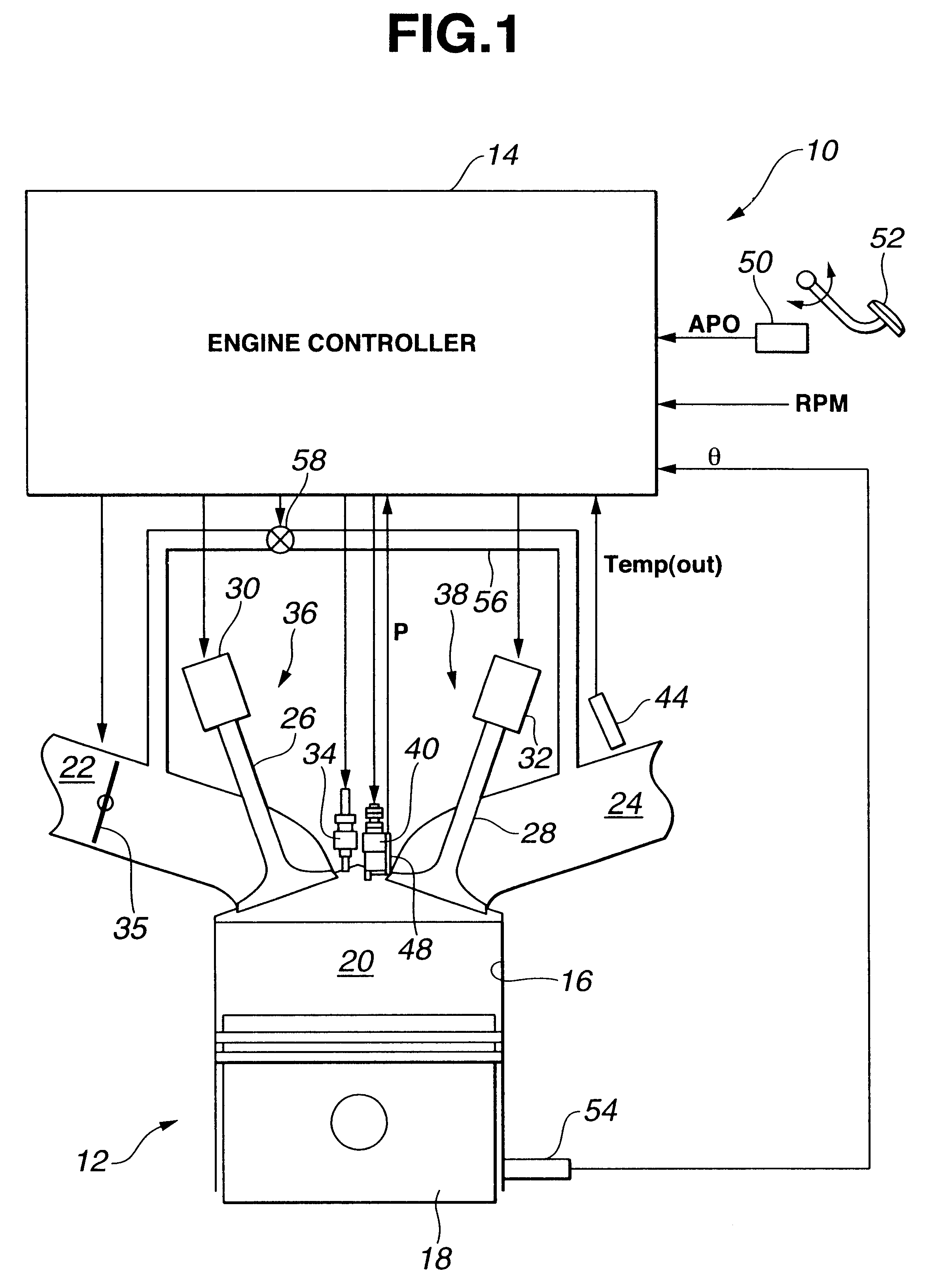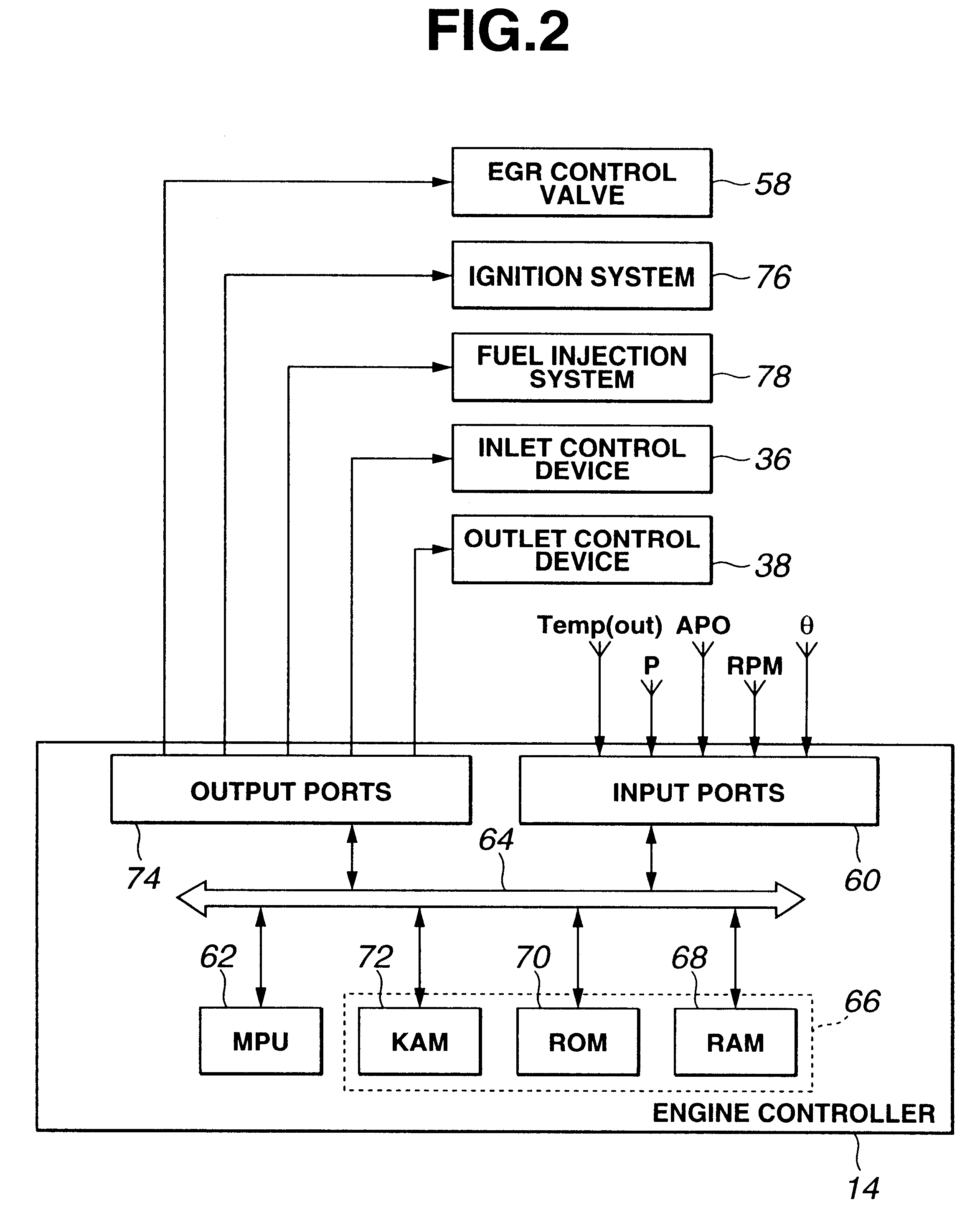Enhanced multiple injection for auto-ignition in internal combustion engines
a technology of internal combustion engine and auto-ignition, which is applied in the direction of electrical control, non-mechanical valves, instruments, etc., can solve the problems of insufficient inability to achieve sufficient mixing of air and fuel, and inability to control the burning
- Summary
- Abstract
- Description
- Claims
- Application Information
AI Technical Summary
Benefits of technology
Problems solved by technology
Method used
Image
Examples
second embodiment
The second embodiment is substantially the same as the first embodiment described previously in connection with FIGS. 1 to 13. However, the second embodiment is different from the first embodiment in that injection timing IT1 and fuel quantity q1 for main injection are varied against variation of load request in addition to the variation of injection timing IT2 and fuel quantity q2 for trigger injection.
As explained before, knock intensity defines a limit of higher load operating conditions at which auto-ignition combustion is achieved. To suppress knock intensity, retarding BOB from TDC of works. As explained before in connection with FIG. 11, a retard of injection timing IT2 and an increase in fuel quantity q2 for trigger injection corresponding to the retard are required to provide a desired retard of BOB. However, as explained before in connection with FIG. 6, there is a limit to increasing fuel quantity q2 for trigger injection because heterogeneous mixture with local rich port...
third embodiment
The third embodiment is substantially the same as the first embodiment described previously in connection with FIGS. 1 to 13. However, the third embodiment is different from the first embodiment in that injection timings IT1 and T2 and fuel quantities q1 and q2 are varied against variation of load request and engine speed.
Referring to FIG. 17, the maximum rate of change dP / dtmax increases as engine speed increases as illustrated by the curve 198. This curve 198 shows that occurrence of knock is high at high engine speed. Thus, it is necessary to retard BOB from TDC of compression stroke at higher engine speeds.
FIG. 18 illustrates variation of injection timing IT2 for trigger injection against various engine speed and load request. As mentioned previously, injection timing IT2 increases in crank angle in a retard direction at higher load request. In the third embodiment, injection timing IT2 increases in crank angle in a retard direction at higher engine speeds. In FIG. 18, a number ...
fourth embodiment
This fourth embodiment requires an exhaust gas temperature sensor 44, an EGR control valve 58 and an EGR conduit 56.
As mentioned before, in the embodiments, auto-ignition combustion is achieved at low and middle load, while spark-ignition combustion is accomplished at high speed with high load. Fuel with low cetane number, such as, gasoline, is difficult to ignite as compared to fuel with high cetane number, such as fuel for diesel engines. To achieve auto-ignition of gasoline fuel, it is useful to elevate temperature of mixture. In the fourth embodiment, exhaust gas from the EGR conduit is utilized to elevate the cylinder temperature.
FIG. 25 provides variation of BOB against variation of total fuel quantity q and cylinder temperature Temp when air / fuel mixture is homogeneous. In FIG. 25, a plurality of lines 290, 292, 294, 296, 298, and 300 are illustrated, each connecting equal crank angle for BOB against variation of fuel quantity q and cylinder temperature Temp. The crank angles...
PUM
 Login to View More
Login to View More Abstract
Description
Claims
Application Information
 Login to View More
Login to View More - R&D
- Intellectual Property
- Life Sciences
- Materials
- Tech Scout
- Unparalleled Data Quality
- Higher Quality Content
- 60% Fewer Hallucinations
Browse by: Latest US Patents, China's latest patents, Technical Efficacy Thesaurus, Application Domain, Technology Topic, Popular Technical Reports.
© 2025 PatSnap. All rights reserved.Legal|Privacy policy|Modern Slavery Act Transparency Statement|Sitemap|About US| Contact US: help@patsnap.com



